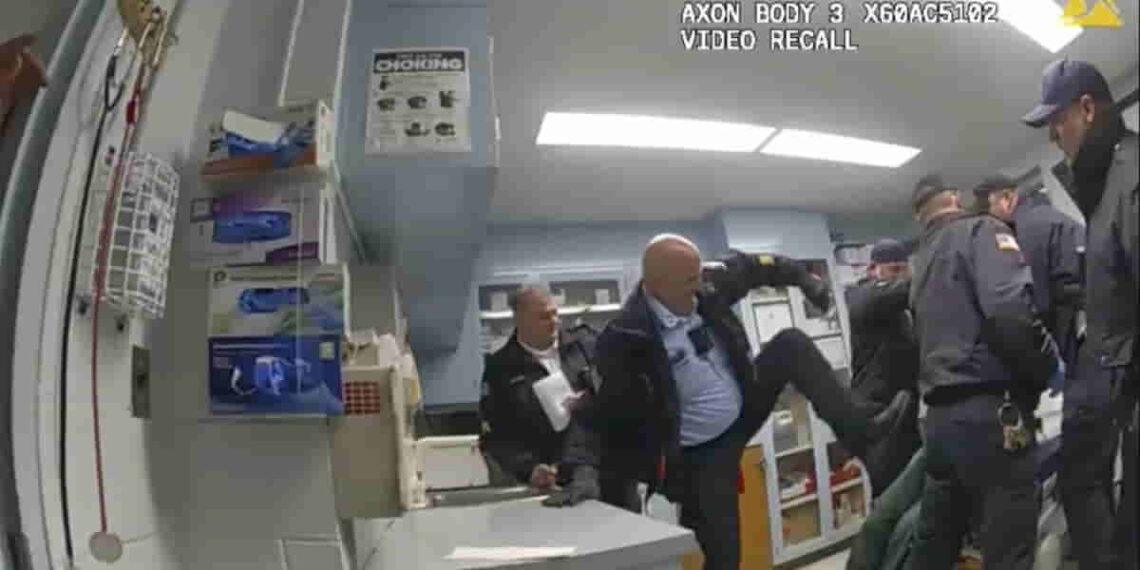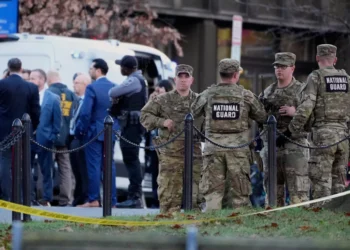New York Correctional Officers Caught on Camera Brutally Beating Handcuffed Inmate Before His Death
Newly released footage from body cameras reveals the shocking details of a brutal attack on Robert Brooks, a 43-year-old inmate at Marcy Correctional Facility in New York. The December 9 assault, carried out by correctional officers, involved repeated punches, strikes to the chest with a shoe, and lifting Brooks by the neck before dropping him. The incident occurred just hours after Brooks was transferred to the facility and has drawn widespread outrage.
Disturbing Footage and Immediate Aftermath
The body camera footage, released by New York Attorney General Letitia James, shows Brooks sitting handcuffed on a medical examination table while correctional officers beat him. One officer strikes him with a shoe, while another lifts him by the neck and drops him. After the attack, the officers stripped Brooks of his clothing as he lay motionless and bloodied.
Brooks was pronounced dead at a hospital the following morning. Preliminary autopsy findings point to asphyxia caused by neck compression and suggest his death was a result of actions by another person.
Attorney General James described the videos as “shocking and disturbing,” warning viewers to exercise caution before watching. Notably, the footage lacks audio, as the officers failed to activate the body cameras during the incident—a violation of standard protocol.
State Response and Investigation
New York Governor Kathy Hochul called the assault a “senseless killing” and announced the termination of 13 correctional officers and a nurse implicated in the incident. She expressed her outrage, stating, “This type of behavior is unacceptable and undermines public trust.”
The Department of Corrections and Community Supervision has since mandated body camera usage during all staff interactions with inmates. Despite this directive, Attorney General James has not confirmed whether criminal charges will be filed against the officers involved.
Advocates and Family Demand Accountability
Elizabeth Mazur, an attorney representing Brooks’ family, said the footage shows the “horrific and extreme nature” of the attack. “Robert Brooks was fatally, violently beaten by those entrusted with his safety,” she stated. Mazur emphasized that such violence creates a culture of fear for other inmates.
Prison oversight groups and advocacy organizations echoed these concerns. Jennifer Scaife, executive director of the Correctional Association of New York, described the attack as “sickening and appalling,” citing previous reports of systemic brutality and racism at Marcy Correctional Facility.
Tina Luongo of The Legal Aid Society called for transparency and systemic reforms. “This grotesque display of inhumanity must not be forgotten once the headlines fade,” she said.
Broader Implications for Prison Reform
The union representing correctional officers, the New York State Correctional Officers and Police Benevolent Association, condemned the assault. In a statement, the union said, “What we witnessed is incomprehensible and not reflective of the great work our members perform daily.” However, critics argue that such incidents are indicative of deeper systemic issues.
David Condliffe, executive director of the Center for Community Alternatives, highlighted the broader culture of abuse in the prison system. “This violence is not an anomaly; it is the product of a system steeped in impunity,” he said. Condliffe stressed the need for systemic reforms beyond firing the individuals involved.
A History of Violence at Marcy Correctional Facility
Marcy Correctional Facility, located about 200 miles northwest of New York City, has faced allegations of pervasive brutality and racism. A 2022 monitoring visit by the Correctional Association of New York documented numerous reports of abuse. Scaife called for urgent reforms to address the systemic issues that enable such incidents.
Calls for Justice and Reform
Advocates, attorneys, and nonprofit organizations are demanding comprehensive reforms to prevent further violence within prisons. They argue that the assault on Robert Brooks should serve as a wake-up call to address the deep-seated culture of brutality and impunity in correctional facilities.
“This is not just about holding individuals accountable; it’s about dismantling a system that allows violence to thrive,” Luongo said.
As investigations continue, Brooks’ death stands as a stark reminder of the urgent need for transparency, oversight, and reform in the U.S. prison system.
This article was rewritten by JournosNews.com based on verified reporting from trusted sources. The content has been independently reviewed, fact-checked, and edited for accuracy, neutrality, tone, and global readability in accordance with Google News and AdSense standards.
All opinions, quotes, or statements from contributors, experts, or sourced organizations do not necessarily reflect the views of JournosNews.com. JournosNews.com maintains full editorial independence from any external funders, sponsors, or organizations.
Stay informed with JournosNews.com — your trusted source for verified global reporting and in-depth analysis. Follow us on Google News, BlueSky, and X for real-time updates.














